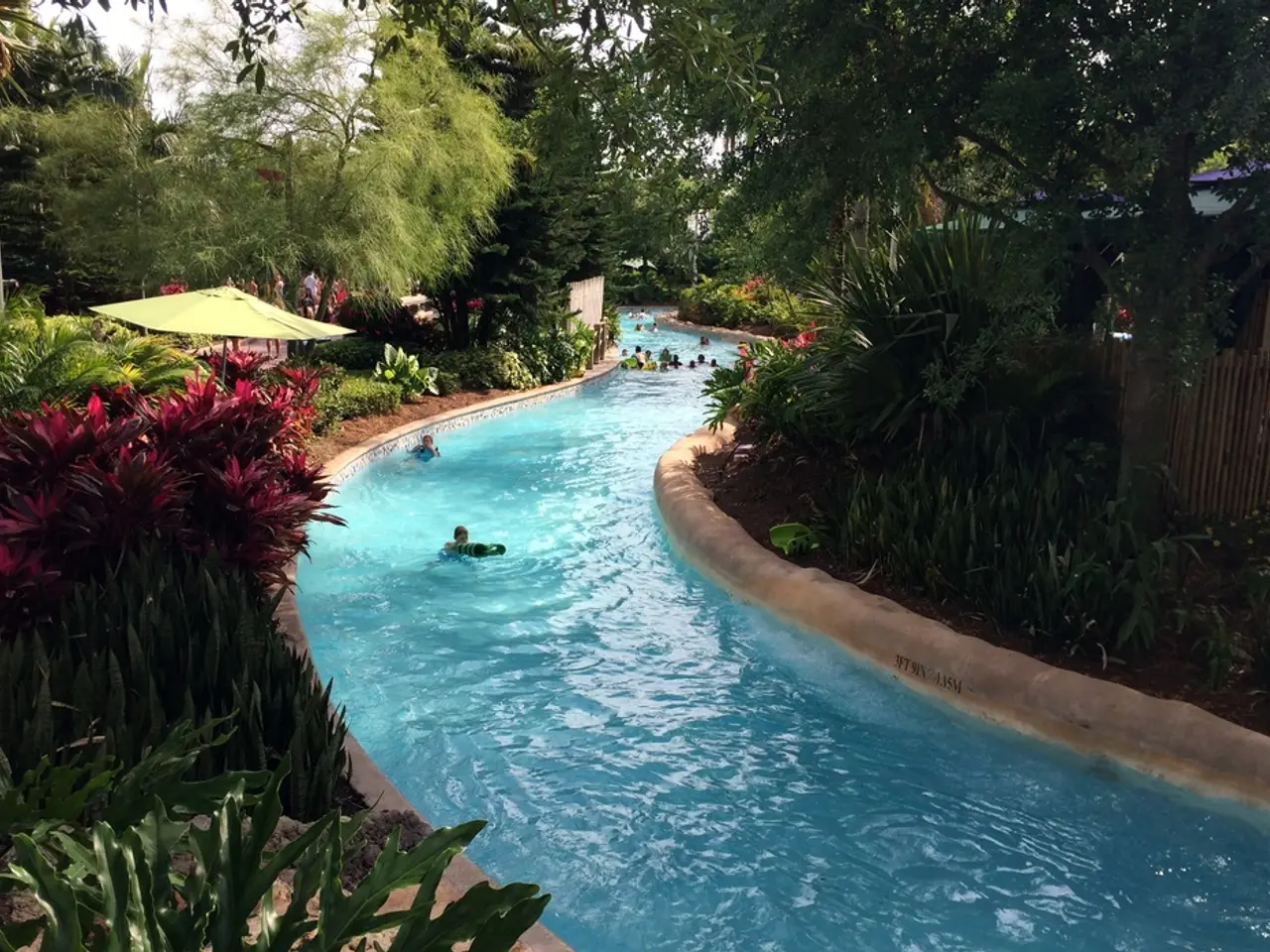Swimming pools' origin and evolution through the years
From ancient times to the modern era, swimming pools have undergone a remarkable transformation, reflecting societal shifts and technological advancements. Today, they are being reshaped by environmental concerns, particularly climate change and water scarcity.
Swimming as a human activity dates back to prehistoric times, as evidenced by Stone Age cave paintings depicting swimming scenes around 7,000 years ago. The Romans, renowned for their public baths, are credited with constructing swimming pools distinct from these baths. Gaius Maecenas built the first heated swimming pool in the 1st century BCE, indicative of both luxury and early attempts to control water environments for recreation and health.
During the Middle Ages, swimming pools declined in popularity due to cultural shifts and deteriorating public health practices. However, swimming continued to be valued in regions with more stable climates or cultures that placed significance on the activity, such as in Islamic and Far Eastern societies.
Swimming pools began to reappear in Europe during the early 1800s, with the first indoor swimming pools marking a resurgence in swimming as a structured activity. The formation of the National Swimming Society and the Amateur Swimming Association fostered the construction of artificial pools and the development of swimming as a competitive sport.
The 20th century saw rapid advancements in pool design, including better filtration systems, heating, lighting, and safety features. The growing international competition, especially the Olympics, led to the proliferation of 50-meter pools and innovations such as wave-killing gutters, racing lane markers, electronic timing, and underwater cameras. Pools became a staple of residential and commercial properties, symbolizing health, leisure, and status.
As climate change intensifies, water scarcity is becoming a pressing issue in many regions. Traditional swimming pools, being water-intensive, are seen as unsustainable in areas facing droughts and water restrictions. The swimming pool industry is responding with innovations such as saltwater filtration, eco-friendly pool covers to reduce evaporation, and water recycling systems. Modern pools increasingly incorporate smart technology for efficient water management, such as automated leak detection and more precise chemical dosing.
There is a growing trend towards natural swimming pools, which use plants and natural filtration rather than chemicals, reducing water waste and environmental impact. Public awareness and regulations are promoting water conservation, leading to the redesign of pools and the adoption of water-saving practices.
In conclusion, the history of swimming pools reflects broader cultural, technological, and social changes. From luxury amenities in Roman villas to the modern era of Olympic competition and leisure, pools have continuously evolved. Today, the future of swimming pools is being reshaped by environmental imperatives, with sustainability and water conservation at the forefront of design and management.
The documentary "Pool Tales - The Dream of Cooling Off" explores the history and future of swimming pools, airing on Arte on July 10th at 8:15 PM. It is a timely reminder of the importance of balancing our love for swimming pools with the need for environmental responsibility.
What adjustments is the swimming pool industry making to address lifestyle preferences for outdoor-living and home-and-garden Earth-friendly practices in light of growing environmental concerns such as climate change and water scarcity? The evolution of modern swimming pools now incorporates the use of natural filtration, efficient water management technologies, and water recycling systems to decrease water usage and environmental impact, moving towards a more sustainable and eco-friendly lifestyle.




